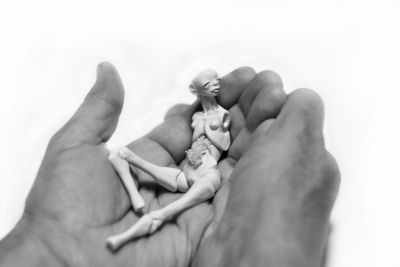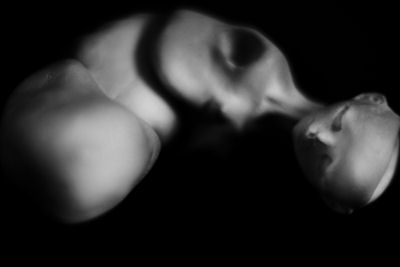|
Strona archiwalna!
Ta strona zawiera treści archiwalne, które nie były zmieniane po 23 września 2019 r. Jeśli chcesz wiedzieć więcej zapoznaj się z deklaracją dostępności
|
||||||
archiwum
 2006 2006
 2008 2008
 2010 2010
 2012 2012
 2014 2014 |
||||||

| ||||||
 |
 |
|||||

|
||||||
| strona główna założenia regulamin kalendarium wskazówki pobierz jury rejestracja zgłoszone projekty galeria gallery | archiwum kontakt | |||||
Description popularizing the research project What do Galatea and Pinocchio have in common? Galatea is the sculpture which the mythological king of Cyprus, Pygmalion, fell in love with. Pinocchio is a wooden puppet who was loved like his own son by woodcarver Geppetto. Galatea and Pinocchio, apart from love they were given, have one more thing in common: both were created by those who later loved them. Galatea was an ivory statue and Pinocchio was a wooden puppet. Actually, they may have one more thing in common : they were creations which became famous for their ability to live. The emotional bond between a creator and their creation is nothing extraordinary. It is hardly surprising because the very aim of artistic creation is to convey thoughts, ideas and emotions. It is hard to imagine a more personal message. Often an art object, loaded with emotional charge, starts living on its own, although a bit less literally than Galatea and Pygmalion. One of the signs of life of such an object is the fact that it is still being formed, as an artist seeks ever better form of expression. In this aspect, Galatea and Pinocchio will be accompanied by Hans Bellmer's dolls, in which we can hear the heartbeat of their creator. They may not be as impeccably beautiful as Galatea, however, imperfections of the dolls express the internal struggle of the artist with himself, his identity, his sexuality and the work of art itself. The works are so evocative that a sensitive viewer also feels the emotions. The emotions evoked by Bellmer's dolls of deformed bodies are hard to assess with rational tools. The emotional layer of the message: anxiety, fascination and curiosity may fleet any scientific analyses. Yet those who specialize in history, history of art and psychology will try to interpret the artist's message and seek its source in the surrounding world. With their help, it is easier to tune to the artist's intentions and succumb to its influence. Emotional reception of an artwork makes it live its own life, although more metaphorical one than the wooden puppet or the ivory statue. Abstract Hans Bellmer, an artist undoubtedly considered one of the "titans of Surrealism", is mainly associated with a series of sculptural installations including life-sized, incomplete, flimsy and girlish ball-jointed dolls, often with duplicated body parts. Bellmer made them in the 1930s. It seems that just as he influenced them (indeed, he was their creator and so-called "father"), he was seduced by them. The artist also formed them in others ways -they were present in his photographs, drawings and graphics. The aim of the project is to demonstrate the problem of mutual interactions between an artist and their work, blurred difference between the sexes and seeking one's own identity on the basis of artistic practices of Hans Bellmer. The specificity of the work of this puppeteer is that, when perceived superficially, it appears strongly repulsive and in many cases it uses the word "other". BJDs are referred to as hybrids due to their specific structure, which allows for infinite movement of individual elements, as though they were con-stantly "under construction". We are not able to identify these elements. In our assessment, in which we predicate that a part of the doll does not match the rest- and therefore it is not a substantial whole - we object to what we see and we want to replace it with something else. At this very moment, out of the grim noir emerges the aspect of Bellmer's art aimed at the dialogue. Who or what is this "unrecognized" towards which we are directed? It is the Other, located on two levels. These two conditions are equal. In neither case can we identify with the doll pre-sented to us by the artist. In the first case, we can see that these dislocated elements are in ourselves (our own Other) - only after encountering them can we experience who we really are. In the other one, we realize that although we may approach the doll very closely and even spy on her "intimate life," we will remain but observers. The dolls exist outside our mind. Bellmer's BJDs are dolls which play a double game with us. The Other is accused of only being our (or Bellmer's) dream/ fantasy. Meanwhile, it is as real as the artist's dolls. This Other can be moved in ourselves for a lifetime (like "the pain moved"). From time to time it can control us - become ourselves. The statement "I am someone else" is not at all about putting an equation mark be-tween myself and the Other. The Other should jump like the joint in the doll into the right place (if nothing catches the smooth surface and everything fits nicely together - the pain is over-come). Deformity of Bellmer's works is derived from the scarcity of our consciousness, and the artist's dolls lacking certain elements or having them doubled are the representation of the absent. The masculine-feminine fantasies are the ingredients constantly intertwined in his works, being a kind of decomposition of the entity. By using such mean s, the puppeteer want-ed to present himself as a stranger. In alienation, on the other hand, one can find oneself.
|


|
|||||













